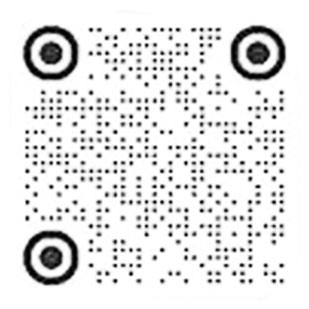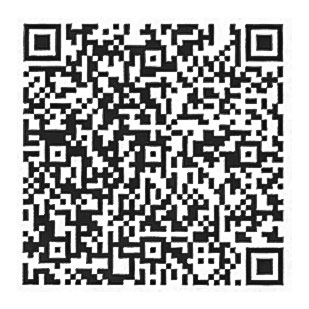备案号:辽ICP备19007957号-1
![]() 聆听您的声音:feedback@highmark.com.cn企业热线:400-778-8318
聆听您的声音:feedback@highmark.com.cn企业热线:400-778-8318
Copyright ©2015- 海马课堂网络科技(大连)有限公司办公地址:辽宁省大连市高新技术产业园区火炬路32A号创业大厦A座18层1801室
1. Introduction
Biometrics can be defined as metrics related to human characteristics. Many different aspects of human physiology, chemistry or behavior can be used for biometric authentication (Phillips, et al., 2000). With the improvement of social public security and personal information security’s requirement, biometric identification technology has become the first choice of secure verification. It is a high technology which uses body biology character to identify identity. The paper introduces the back ground of biometric identification technology, the notion of biometric identification technology, the basic process of biometric identification, the development and prospect of biometric identification technology (Zhang, 2013). Fingerprint, Palm veins, Face recognition, DNA, Palm print, Hand geometry, Iris recognition and Retina are all used as biometric recognition. Biometric identification technology is a high-tech technology that is using biometric features for people identification (Shen, et al., 1997; Wechsler, 2007). People are born with physical characteristics, relatively speaking which is steady, the current physical characteristics that can be used are: fingerprints, palm prints, face, eye mask, and hand vessels (Bolle, et al., 2000). And behavioral characteristics of human acquired form, when the body state and changes in the environment, these features have a certain degree of variability. Currently the main common behavioral traits are someone's voice, handwriting, and keystroke state (Zhu & Zhang, 2010). In comparison, the physical characteristics of some higher-value applications in the field of biometrics. Typically biometric processes can be described: Firstly, photoelectric scanning sensor head extract characteristic image of people, and then quantized, re-use mathematical algorithms to extract features of the image (Liu & Silverman, 2001). After processing, the resulting features template is compared with the biometric database of the characteristics stored previously in one by one. Last, according to the similarity it is determined whether the data is matched or not.
2. Arguments
There are two argument that the biometric recognition make world safe. Firstly, biometric can be widespread used. Because the fingerprint collection is simple, and equipment is low-cost. Fingerprint recognition technology analyse local and global features and characteristic of fingerprint. Fingerprint features include such as ridges, valleys and end point, bifurcation point or points of junction. Eigenvalues extracted from the fingerprint can be very detailed. That is to say, it can reliably confirm a person's identity.
Other may say for example, fingerprint is very easy to copy as every scan, the fingerprint will be left on the machine. Some people already find some methods to copy fingerprints and other biometrics (News from Elsewhere, 2014; BBC, 2009).
However, as development of recognition techniques, the machines now is fingerprint-proof. Fingerprint is unique body characteristics, and their complexity is sufficient to provide adequate feature for authentication. For example, Touch ID (APPLE) can not be recognise the fake finger. To increase the accuracy, simply enrol more fingerprints, to identify more fingers up to up to ten, and each fingerprint is unique. Fingerprint identification is characterized by the body's unique fingerprint characteristics, and their complexity is sufficient to provide enough features for identification. In order to increase the reliability, simply more fingerprints are enrolled, to identify more fingers. Fingerprint scanning is fast and easy to use. When scanning the fingerprint, the user's finger must be in contact with fingerprint head. The direct contact with the fingerprint biometric read head is the most reliable method (Hong, et al., 1998). Biometric features is employed which is uniqueness, stability, can be collected, can be converted into templates and available to comparison with mathematical methods (Nanavati, et al., 2000). The biggest advantage of biometric technology is safe, reliable and convenient.
The second argument is biometric information is leading to an easy daily life. 10 years ago, biometric prevailing view of people was that it was a scientific illusion. Now, thanks to advances in technology, all is very different. There have been more accurate and refined products, and the price dropped to a more acceptable level. In addition, people knowledge about how to apply biometrics to other areas also significantly increased. All this makes it closer to everyday life.
These information are probably highly confidential, but, the information usually need gained by scanning. It can not be denied that here would be healthy problems, such as Iris scanning and retina scanning. Retinal scanning technology has not been any test. Obviously, retinal scanning technology may bring the user healthy damage, which requires further study; for consumers, retinal scanning technology is unattractive, it is difficult to further reduce its cost (Jain, et al., 2004). For example, there are a lots factors affecting its accuracy, such as a disease such as cataracts and severe astigmatism (Liu & Silverman, 2001). Subject who is being scanned must be close by the camera optics. That is to say, procedure of scanning is described by some people as offensive. Thus, this is not very user friendly (Roberts, 2009).
I admit that there may be a healthy problem. However, before the scanning approved, they would not be applied to daily life. Here, I emphasize that the biometric system is safe in daily life. The fingerprint and face perception is enough for our daily life. In terms of military or other confidential situation. Fingerprint scanning is fast, easy to use; the contact to read is the biometric most feasible method; the price will be more affordable. So the biometric system would be highly accessible (Daugman, 1993). In addition Biometrics relies on computer technology, so you can be easily integrated into existing computer systems to achieve computer management, which is significant savings in human resources (Thieme & Nanavati, 2002). Biometric information that can be used to distinguish the main physical characteristics and behavior was characterized by two types. The German Association has developed a multiple recognition system. It combined three kinds of biometrics, a person's face, voice, and movement, within 1s the person is quickly identified (Singh & Sahan, 2013). When one of biometrics changes, multiple templates recognition system can process identification based on other two biometrics. If biometric technology are required securely with quality, the technology will require further development and improvement, especially with the use of application-specific algorithm, various biometric fusion algorithm. Algorithm processing in different environments, and application of classification algorithms on massive data, are the future research which needs to continue to explore the issue.
3. Conclusion
In conclusion, with the development of science and technology, the price would have been reduced. In addition, more improvement would be made to the techniques. After sufficient practical experiments, the biometric system would make the world safer. With nearly 20 years of development of computer technology and biomedical engineering technology advances, the use of human biological characteristics to identify with the uniqueness of each individual's biometrics will undoubtedly become the preferred way to security verification. Biometric technology has become an extensive research. Abandon the traditional smart card, totally dependent on human biological characteristics, can it really be absolutely safe? In fact, no security certification can not be fool proof, biometrics is no exception. Since 2000, Germany, Japan, the United States, Britain and more people announced that they successfully invented a new type of materials and processes that can be easily collected fingerprint people to stay in any place, and used fake fingerprints successfully passed test the security system. So other identifying fingerprints, iris, face and other information is also spared. For this phenomenon, researchers adopt peripheral method or fusion method using a variety of biometric identification system in order to improve the performance of the security. Such as fingerprint identification system, it can simultaneously measure fingerprint temperature, humidity, pressure, flexibility, to achieve maximum security purposes. Biometric fusion recognition method has been new progress (Daugman, 1993). Anyway, biometric technology in the 21st century will be one of the most promising emerging technology. As technology continues to mature and expand the scope of application, everyone will enjoy fast and convenient biometric technology.
BBC, 2009. 'Fake fingerprint' Chinese woman fools Japan controls. [Online]
Available at: http://news.bbc.co.uk/1/hi/world/asia-pacific/8400222.stm
[Accessed 20 6 2015].
Bolle, R. M., Pankanti, S. & Ratha, N. K., 2000. Evaluation techniques for biometrics-based authentication systems (FRR). In Pattern Recognition, 2000. Proceedings.. s.l., 15th International Conference on (Vol. 2, pp. 831-837). IEEE.
Daugman, J., 1993. High confidence visual recognition of persons by a test of statistical independence. IEEE Transactions on Pattern Analysis and Machine Intelligence, Volume 15(11), pp. 1148-1161.
Hong, L., Wan, Y. & Jain, A., 1998. Fingerprint image enhancement: algorithm and performance evaluation. IEEE Transactions on Pattern Analysis and Machine Intelligence, Volume 20(8), pp. 777-789.
Jain, A., Ross, A. & Prabhakar, S., 2004. An introduction to biometric recognition. IEEE Transactions on Circuits and Systems for Video Technology, Volume 14(1), pp. 4-20.
Liu, S. & Silverman, M., 2001. A practical guide to biometric security technology. IT Professional, Volume 3(1), pp. 27-32.
Liu, S. & Silverman, M., 2001. A practical guide to biometric security technology. IT Professional, Volume 3(1), pp. 27-32.
Nanavati, S., Thieme, N. & Nanavati, R., 2000. Biometrics: Identification in a Net Worked World. s.l.:s.n.
News from Elsewhere, 2014. Dominican Republic: Officials spot fake fingerprint 'trend'. [Online]
Available at: http://www.bbc.co.uk/news/blogs-news-from-elsewhere-26156051
[Accessed 20 6 2015].
Phillips, P., Moon, H., Rizvi, S. & Rauss, P., 2000. The FERET evaluation methodology for face-recognition algorithms. IEEE Transactions on Pattern Analysis and Machine Intelligence, Volume 22(10), pp. 1090-1104.
Roberts, C., 2009. Biometrics.
Shen, W., Surette, M. & Khanna, R., 1997. Evaluation of automated biometrics-based identification and verification systems. Proceedings of the IEEE, Volume 85(9), pp. 1464-1478.
Singh, C. & Sahan, A. M., 2013. Face recognition using complex wavelet moments. Optics and Laser Technology, Volume 47, pp. 256-267.
Thieme, S. N. M. & Nanavati, R., 2002. Biometrics Identity Verification in a Networked World. Hoboken : Wiley.
Wechsler, H., 2007. Reliable Face Recognition Methods System Design, Impementation and Evaluation. Boston, MA: Springer US.
Zhang, D. D., 2013. Automated biometrics: Technologies and systems (Vol. 7).. Boston: Springer Science & Business Media.
Zhu, L.-q. & Zhang, S.-y., 2010. Multimodal biometric identification system based on finger geometry, knuckle print and palm print. Pattern Recognition Letters, Volume 31(12), pp. 1641-1649 .

 24h在线客服
24h在线客服







备案号:辽ICP备19007957号-1
![]() 聆听您的声音:feedback@highmark.com.cn企业热线:400-778-8318
聆听您的声音:feedback@highmark.com.cn企业热线:400-778-8318
Copyright ©2015- 海马课堂网络科技(大连)有限公司办公地址:辽宁省大连市高新技术产业园区火炬路32A号创业大厦A座18层1801室
hmkt088